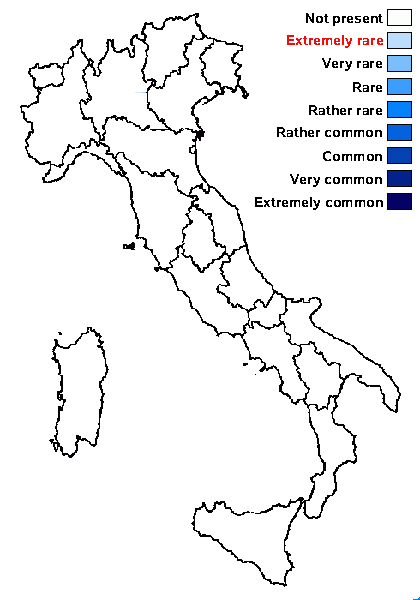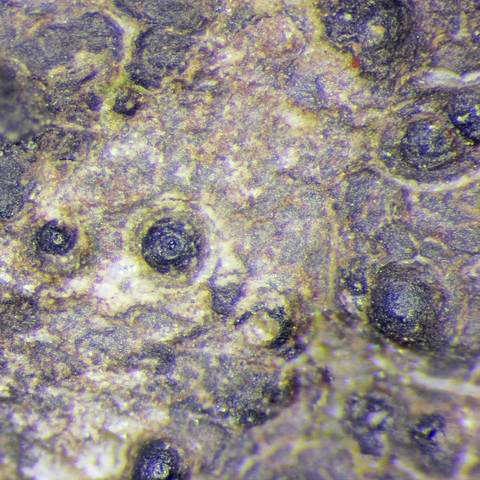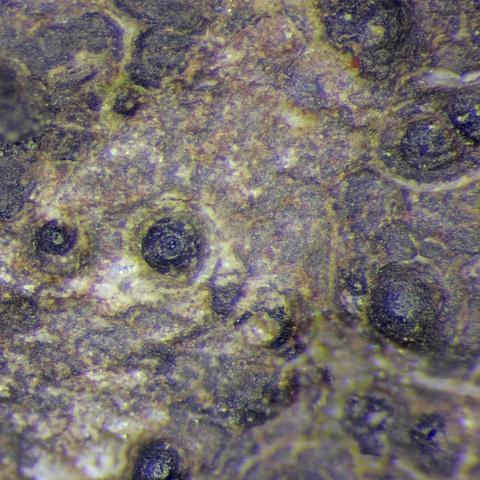Thelidium pluvium Orange
Lichenologist, 23: 101, 1991.
Synonyms:
Distribution:
Description: Thallus crustose, episubstratic, continuous to faintly rimose, pale grey-green to brown, up to 85 μm thick, paraplectenchymatous, in section without a dark basal layer. Perithecia black, forming 0.25-0.5 mm wide, conical-hemispherical projections which are covered, except at apex, by a thalline layer, with an inconspicuous, not or only slightly depressed ostiole. Involucrellum dark brown, rather thin and poorly developed, covering the upper half of exciple and scarcely spreading, or spreading sideways and downwards to almost the base-level; exciple 0.2-0.35 mm across, brown at apex, colourless below; hamathecium of up to 40 µm long periphyses and periphysoids, interascal filaments absent; hymenial gel I+ red (I+ blue at very low concentrations of I), K/I+ blue. Asci 8-spored, ellipsoid to clavate, I-, fissitunicate, the wall thickened above, with an ocular chamber, dehiscent by extrusion of a delicate rostrum, 75-100 x 25-30 µm. Ascospores 1-septate, hyaline, ellipsoid, (19-)24-32(-37) x (7-)10-16(-18) μm. Photobiont chlorococcoid. Spot tests: K-, C-, KC-, P-, UV-. Chemistry: without lichen substances.Note: this species grows in the splash zone of small rivers and creeks on siliceous rocks and pebbles, usually in shaded situations, below the subalpine belt; it was reported from the Eastern Alps (Austria); to be looked for in the Italian Alps.
Growth form: Crustose
Substrata: rocks
Photobiont: green algae other than Trentepohlia
Reproductive strategy: mainly sexual
Periodically submerged (e.g. in creeks)
Pioneer species

Predictive model
Growth form: Crustose
Substrata: rocks
Photobiont: green algae other than Trentepohlia
Reproductive strategy: mainly sexual
Periodically submerged (e.g. in creeks)
Pioneer species

Predictive model
 INDEX FUNGORUM
INDEX FUNGORUM
 GBIF
GBIF



